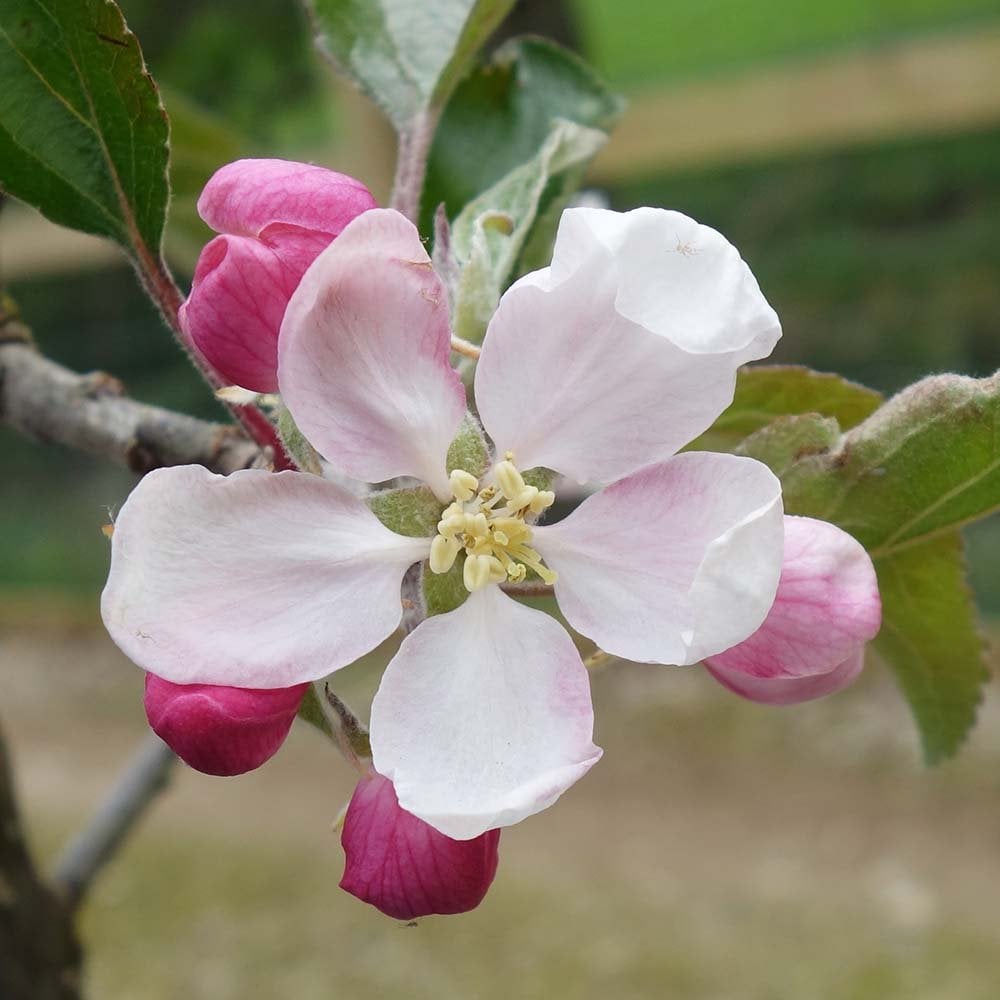Cox Self Fertile Apple Tree
Cox Self Fertile Apple Tree
Eating Apple Trees

Cox Self Fertile Apple Tree
Eating Apple Trees





Key features




Description
'Cox Self Fertile' apples are very similar to classic Cox’s (Cox's Orange Pippin), but this newer variety has several advantages. As the name implies, Cox Self Fertile apple trees are self fertile and don't require an additional tree for pollination. They are more suited to Northern areas and cope with less favourable conditions, yet remains just as suitable to easier growing conditions.
Quickly becoming a favourite with our customers, 'Cox Self Fertile' produces juicy, crisp and aromatic apples for picking in October. It is a great choice for gardens, particularly when only one fruit tree is desired. As such, in addition to our regular rootstocks, we offer this apple tree on a very-dwarf rootstock which is ideal for containers or smaller gardens.
Malus domestica 'Cox's Self Fertile' originates from England.
| Small shrubs (1-3) | Young trees & 4+ small shrubs | Select semi-mature trees & shrubs (1-4) | All other mature trees (any quantity) | |
|---|---|---|---|---|
| Mainland UK ex. Scottish Highlands | £10 | £12 | £35 | from £55 |
| Scottish Highlands & the Islands | From £30 | |||
| Outside Mainland UK | Currently we are unable to deliver outside of Mainland UK | |||
Product Details
Key features




Description
'Cox Self Fertile' apples are very similar to classic Cox’s (Cox's Orange Pippin), but this newer variety has several advantages. As the name implies, Cox Self Fertile apple trees are self fertile and don't require...
'Cox Self Fertile' apples are very similar to classic Cox’s (Cox's Orange Pippin), but this newer variety has several advantages. As the name implies, Cox Self Fertile apple trees are self fertile and don't require an additional tree for pollination. They are more suited to Northern areas and cope with less favourable conditions, yet remains just as suitable to easier growing conditions.
Quickly becoming a favourite with our customers, 'Cox Self Fertile' produces juicy, crisp and aromatic apples for picking in October. It is a great choice for gardens, particularly when only one fruit tree is desired. As such, in addition to our regular rootstocks, we offer this apple tree on a very-dwarf rootstock which is ideal for containers or smaller gardens.
Malus domestica 'Cox's Self Fertile' originates from England.
Planting & Care
Delivery Information
| Small shrubs (1-3) | Young trees & 4+ small shrubs | Select semi-mature trees & shrubs (1-4) | All other mature trees (any quantity) | |
|---|---|---|---|---|
| Mainland UK ex. Scottish Highlands | £10 | £12 | £35 | from £55 |
| Scottish Highlands & the Islands | From £30 | |||
| Outside Mainland UK | Currently we are unable to deliver outside of Mainland UK | |||
MORE TO GROW YOUR GARDEN


























